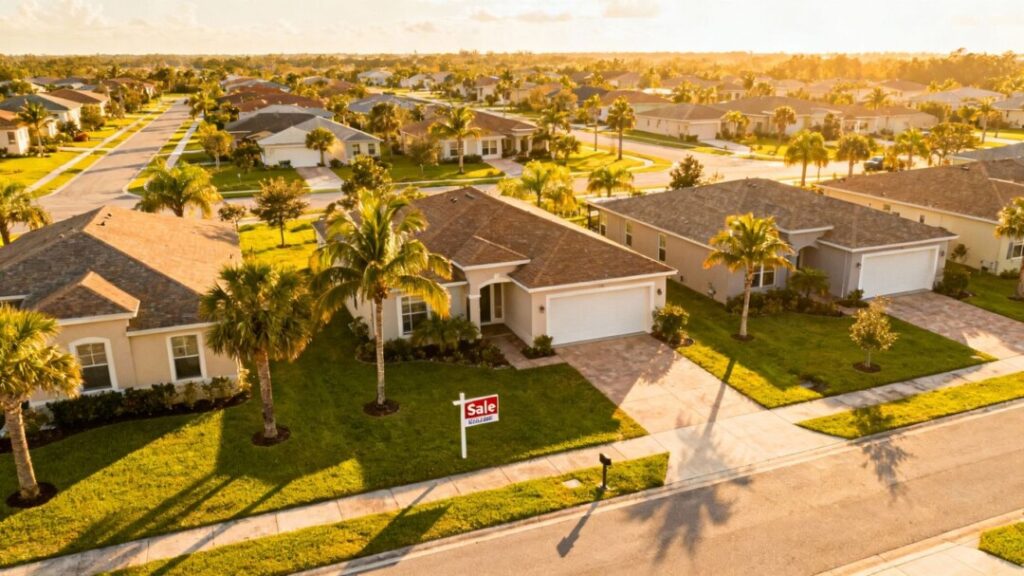Florida’s real estate landscape is experiencing a dramatic shift: after several years as a red-hot seller’s market, prices are now falling, inventory is swelling, and buyers are finding themselves with more negotiating power than they’ve seen in years.
Key Takeaways
- Home prices are declining across Florida, with some areas seeing fifth straight months of year-over-year reductions.
- Inventory has surged; homes stay on the market longer, and delistings are at record highs, especially in Miami.
- Many sellers are being forced to reduce prices or remove homes from the market entirely.
- Buyers need higher incomes than ever before to afford homes, but mortgage rates and incentives may tip the scales in their favor soon.
Prices Slide and Inventory Surges
Throughout 2025, Florida’s housing market has undergone a marked correction. According to recent industry data, the median sale price for a single-family home dipped to around $404,000 in July, while the average time a property spends on the market soared. In Miami, for example, homes spent 15 days longer on the market compared to last year.
Inventory is swelling due to both newly built homes from the pandemic boom hitting the market and sluggish sales, with active listings up more than 9% statewide compared to a year ago. Miami leads the nation in "delistings," where sellers remove their homes from the market after failing to attract buyers at the prices they want.
Power Shifts Toward Buyers
Recent months have seen a transition to what’s widely considered a buyer’s market in major Florida metros like Miami, Orlando, Jacksonville, and Tampa. With more supply than demand, buyers can negotiate more aggressively–and properties often sell below the asking price, sometimes by about 5%.
Some sellers who bought at peak prices during the pandemic now face a tough choice: accept lower offers, or pull their listings altogether. As many are locked in with significant equity and no urgent need to sell, delistings have risen rapidly.
Can Buyers Really Afford to Jump In?
Despite lower prices, affordability remains a challenging hurdle. The salary needed to buy a Florida home is now estimated at nearly $99,000, whereas the median income is closer to $77,000 statewide. While this gap has narrowed slightly from pandemic highs, it’s still far wider than pre-pandemic norms, when a typical family could buy with an income closer to $40,000.
However, with the Federal Reserve gradually lowering interest rates and more inventory coming online, some buyers who were previously priced out are beginning to reenter the market. Analysts predict that, barring major economic shocks, prices may drop further—potentially up to 6% or more within the next year—before stabilizing.
What’s Next for Florida’s Housing Scene?
Buyers eyeing Florida homes—whether for relocation, investment, or a winter retreat—are advised to keep a close watch on further price changes, mortgage rate trends, and available incentives. Sellers, on the other hand, will need to set realistic expectations.
For both sides, the coming months may be among the most dynamic and competitive seen since before the pandemic boom—offering fresh opportunities, but also new challenges in a rapidly evolving market.
Sources
- Eye on Your Money: South Florida housing market shifts in buyers’ favor as rates fall, inventory rises, CBS News.
- Florida’s Housing Market Has ‘Flipped’ for Homebuyers, Newsweek.
- Florida homes pulled off the market as houses fail to sell, Newsweek.
- This Florida City Now Has the Highest Delisting Rate as Sellers Slash Prices in Weak Market — Is It Time to
Scoop up Your Dream Retirement Home?, MoneyWise.com.


